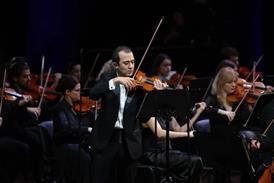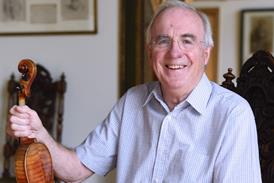- More from navigation items
- Home
- News
- For Subscribers
- Student Hub
- Playing Hub
- Podcast
- Lutherie
- Magazine
- Magazine archive
- Whether you're a player, maker, teacher or enthusiast, you'll find ideas and inspiration from leading artists, teachers and luthiers in our archive which features every issue published since January 2010 - available exclusively to subscribers. View the archive.
- Jobs
- Shop
- Directory
- Contact us
- Subscribe
- Competitions
- Reviews
- Debate
- Artists
- Accessories
Coleridge-Taylor violin and chamber music: From fame to footnote

Despite his prolific output, the works of British composer Samuel Coleridge-Taylor have been performed relatively infrequently in the century following his death. Tatjana Goldberg explores his chamber and violin music, particularly the Violin Concerto, and his fruitful artistic partnership with pioneering US violinist Maud Powell
Despite having a multifaceted career as a composer, conductor, violinist and teacher, Samuel Coleridge-Taylor (1875–1912) figures only marginally in Western musical history. Born a mere 42 years after Britain’s Slavery Abolition Act of 1833, this mixed-race composer (his mother English, his father a Creole from Sierra Leone) gained popular adulation and was critically acclaimed. Even Elgar described him as ‘far and away the cleverest fellow going amongst the younger men’. Dubbed by the press as the ‘African Mahler’, Coleridge-Taylor was received by President Theodore Roosevelt at the White House in 1904, a bold statement at a time when very few black musicians were afforded a similar level of recognition.
Coleridge-Taylor was 15 when, in 1890, he was admitted by principal George Grove to the Royal College of Music (RCM)in his native London. While there, he studied the violin and the piano and had a short period of organ studies before undertaking composition lessons with Charles Villiers Stanford. Importantly, Stanford’s passion for chamber music (evinced in his Piano Quintet and two string quintets) had a profound impact on the young composer.
Coleridge-Taylor wrote prolifically, producing a stream of music for various combinations of instruments and 31 violin pieces in total, accompanied both by piano and by orchestra. His inspiration came from Tchaikovsky, Grieg and, in particular, Dvořák, his ‘first musical love’ (as he wrote in a letter of 1901). These influences can be heard in the Ballade in D minor op.4 (1895) for violin and orchestra and in violin-and-piano works such as Suite de pièces op.3, Two Romantic Pieces op.9 (both 1895), Gipsy Suite op.20, Valse caprice op.23 (both 1896), Violin Sonata in D minor op.28 (1899; for which he was posthumously awarded a Cobbett Prize) and Ballade in C minor op.73 (1907). While some of these works could be described as ‘light music’, his Hiawathan Sketches op.16 (1896) and Four African Dances op.58 (1904) – both for violin and piano – suggest the composer’s appreciation of African American folk music, elements of which he was one of the first to introduce into Western classical music…
Already subscribed? Please sign in
Subscribe to continue reading…
We’re delighted that you are enjoying our website. For a limited period, you can try an online subscription to The Strad completely free of charge.
* Issues and supplements are available as both print and digital editions. Online subscribers will only receive access to the digital versions.




























